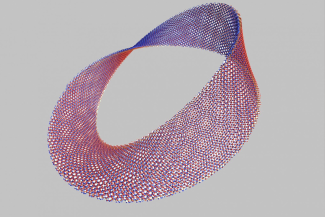Context:
In a recent study published in Nature Journal, scientists found that moiré materials made from semiconductor material can also be superconductors.
More on the news:
- Previous research with tWSe2 has shown potential superconducting states, but it was unstable when researchers cycled it between room temperature and the transition temperature.
- This study creates a new avenue to explore superconductivity in semiconductor-based systems.
Key Findings of the Study:
The researchers explored superconductivity in twisted (angle of 3.65º) bilayer Tungsten diselenide (tWSe₂), a moiré material created by stacking two layers of tungsten diselenide.
The superconductivity in tWSe2 occurs due to electron-electron interactions and half-band filling.
The researchers found that tWSe2 is a robust conductor with a transition temperature of around –272.93º C.

- The transition temperature is the critical value below which a material enters the superconducting state, exhibiting zero electrical resistance.
The moiré material can be transitioned to an insulating (non-conducting) state by altering the electronic properties of the material.
Moiré Materials
Atomically thin van der Waals crystals can be stacked atop one another to create synthetic materials with entirely new properties known as moiré materials.
Even though the two layers of a moiré material have the same arrangement of atoms, the misalignment caused by the small twist produces a completely different pattern.
- It modifies the electronic, magnetic, optical, and phononic properties.
This is because the twist leads to the formation of flat bands in the electronic structure of the material.
These materials have unusual electronic and quantum properties.
The one made of graphene has even been found to be a superconductor.
What is superconductivity?
- Superconductivity was discovered in 1911 by Heike Kamerlingh-Onnes.
- It is the ability of certain materials to conduct a direct electric current (DC) with practically zero electrical resistance or energy loss.
- For a material to behave as a superconductor, very low temperatures (usually around –250º C) are required.
Uses of Superconductors
- Niobium (Nb) is the most widely used superconductor due to its notably high critical temperature.
- Aluminum (Al) is considered an excellent superconductor due to its lightweight and malleability.
- They are used in niche sectors of electronics and medicine, in the form of cables and magnets for particle accelerators, machines for magnetic resonance imaging (MRI), highly sensitive electrical devices, magnetic levitation, electric mobility, quantum computing, and nuclear fusion.

